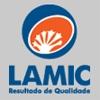Explore all the information on
Mycotoxins in feedstuffs
Welcome to the page about Mycotoxins in feedstuffs of Engormix; a source of knowledge on Mycotoxins in feedstuffs.
Introduction Within livestock production, feed accounts for 65 to 70 % of the total cost of production; however, despite constant efforts to achieve the safety of food intended for animal production, there are still factors that diminish its quality, such as biological pathogens (such as Salmonella spp., E. coli, Listeria spp., Campylobacter spp.), chemical substances (fungicides, herbicides, and insecticides), and presence of fungi (Fusarium, Penicillium, Mucor etc.)(1). Fungal...
Comments : 0
Recommendations: 1
INTRODUCTION Due to its nutritional value, corn (Zea mays L.) is one of the main ingredients used in the diets for poultry worldwide. Brazil is one of the largest corn producer and exporter countries (USDA, 2021), and, according to ABIMILHO (2023), about 50% of the corn produced in Brazil in the 2019/2020 harvest was used for animal consumption, reaching more than 54% in the 2022/2023 harvest. The grain is globally traded as a commodity because it is a homogeneous product from which...
Comments : 0
Recommendations: 0
Background – what are aflatoxins and their impacts Aflatoxins are highly toxic compounds produced by certain strains of Aspergillus fungi, particularly A. flavus and A. parasiticus. These toxins, regulated at very low levels (parts per...
Comments : 0
Recommendations: 0
Quality of stored grain must be maintained through the entire summer period, until stocks can be rotated in the fall. Summer storage is challenging because warm temperatures and high relative humidities put even dry grain at risk for mold and insect activity. The chart below explains why summer aeration can create either continued mold growth or excessive moisture shrink (below 14% moisture corn; 12% moisture soybeans). The horizontal lines are the market standard moistures for corn...
Comments : 0
Recommendations: 0
Extreme rains in northwest Iowa have caused instances of stored grain being covered with floodwater. According to current Food and Drug Administration policy, grain inundated by uncontrolled river or stream water is considered adulterated and must be destroyed. The current situation is one of river water flooding rather than of rain-driven pooled water in low ground, for which there are salvage options. River-based floodwaters can bring in many hazards and rapid spoilage. Flooding...
Comments : 0
Recommendations: 0
1. Introduction The term ‘Aflatoxins’ (AFT) typically refers to the sum of variants AFB1, AFB2, AFG1, AFG2, while ‘Fumonisins’ (FBs) refers to the sum of variants FB1 and FB2 [1]. These groups are mycotoxins produced by molds of genera Aspergillus spp. and Fusarium spp., which commonly colonize corn [2–4]. The contamination of corn by AFT or FBs (especially the main variant FB1) has health implications for consumers of corn-derived products. The AFT are...
Comments : 0
Recommendations: 0


Changing Feed Industry Imperatives Call For A Closer Look At On-Site Aflatoxin Test Methods
Suggested link
Andrew Vignati from VICAM explains how international regulatory standards are raising the bar for feed safety, particularly in exports. Vignati also shares how VICAM’s solutions empower producers of all sizes with the data they need to make safer, smarter decisions. ...
Comments : 0
Recommendations: 0
Andrew Vignati from VICAM speaks about the benefits of using this technology for mycotoxin detection in the feed ...
Comments : 0
Recommendations: 0
Andrew Vignati from VICAM explains the effectiveness of lateral flow strips for onsite feed testing. “It’s plug-and-play. Fast, simple, and reliable enough to act.” ...
Comments : 0
Recommendations: 1
Andrew Vignati from VICAM shares how a small feed mill in Arkansas recovered from a contamination crisis using on-site mycotoxin testing. ...
Comments : 0
Recommendations: 0


Changing Feed Industry Imperatives Call For A Closer Look At On-Site Aflatoxin Test Methods
Suggested link
Andrew Vignati from VICAM breaks down key strategies to detect and manage mycotoxins in feed ...
Comments : 0
Recommendations: 0
1. Introduction Contamination of feed ingredients or complete feed has been shown to be a potential route of pathogen transmission [1,2]. To control this potential route of disease transmission, efforts can focus on the prevention of the contamination step from occurring or implementing strategies to reduce the survival of the bacteria or virus in the material, and thus reduce the likelihood of causing clinical disease when presented to a naïve animal. Prevention...
Comments : 0
Recommendations: 0
Cereals are an international commodity grown in almost all cultivable regions of the world. The three most important cereals that are destined for human and animal consumption are maize ( Zea mays ), wheat ( Triticum spp.) and rice ( Oryza sativa ). These crops can be affected by biotic and abiotic factors in all phenological stages, affecting quality and final yield. The Fusarium graminearum species complex is the main causal agent of ear...
Comments : 0
Recommendations: 0
1. Introduction Soybean expeller (SBE), a by-product obtained during the extruding-expelling process of soybean oil extraction [1], is highly valued as a protein-rich component in animal feed and soy-based food products [2–5]. In Argentina, nearly one million tons of SBE are produced annually [6] in 373 extruding-expelling facilities, primarily located in the Pampa’s region [7]. The average composition of SBE in Argentina is 7.2% moisture, 44.2% protein, and 8.1% residual...
Comments : 0
Recommendations: 1


Changing Feed Industry Imperatives Call For A Closer Look At On-Site Aflatoxin Test Methods
Suggested link
Mycotoxins are toxic compounds produced by certain fungi that contaminate crops and animal feed under specific conditions. These toxins, such as aflatoxins, deoxynivalenol (DON), and ochratoxin A, pose serious health risks to animals and humans. Among their many effects, some mycotoxins directly impair the immune system, causing...
Comments : 2
Recommendations: 10
Introduction Animal husbandry, the agricultural practice of breeding and raising livestock, is a major food-producing industry worldwide. The increasing global demand for animal protein results in rapidly growing animal production as well as the growth of animal feed and the feed additive market. The feed additives have played a significant role in the sustainability of the livestock industry. There are four major drivers for the growth of the animal feed additive market including:...
Comments : 0
Recommendations: 0
Prof. Chung-Feng Chiang (University of Science and Technology, Taiwan) highlights the serious challenge of mycotoxin contamination in imported animal feed ingredients, which negatively impacts livestock growth, immune function, and reproduction. ...
Comments : 0
Recommendations: 3
Andrew J. Vignati, Sales Account Manager at VICAM, discusses the importance of an end-to-end approach using lateral flow strip tests, covering both incoming ingredients and finished feeds...
Comments : 0
Recommendations: 0


Changing Feed Industry Imperatives Call For A Closer Look At On-Site Aflatoxin Test Methods
Suggested link
1. Introduction Corn ranks among the most globally cultivated cereals, with the production of more than 1200 million tons in the 2022/2023 harvest, mainly concentrated in the United States, China, and Brazil [1]. In Brazil, corn is the second most produced grain, following soybeans. For the 2023/2024 harvest, the estimated production in Brazil will exceed 118 million tons [2]. In the Brazilian market, the diversity of corn cultivars is substantial, whereby 98, 259, and 98...
Comments : 0
Recommendations: 1
Mycotoxins are produced by fungi and can lead to sickness in humans and animals, which explains why testing for them in crops, feeds, and food products is so important and is often a regulatory and customer requirement. Fortunately, testing technologies have evolved from slow, tedious, and complicated to smart, fast, and data connected. Tests vary in their performance capabilities and suitability for field, process, or lab environments. With a number of different options, you may be...
Comments : 1
Recommendations: 0





















